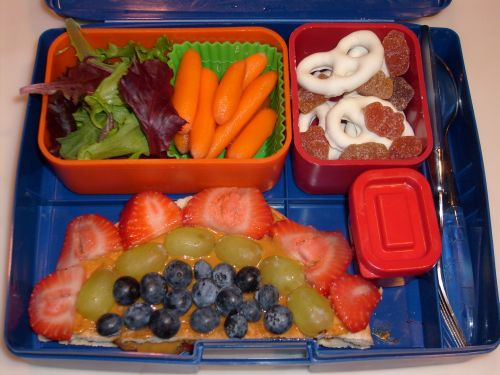Robert Aderholt is a Congressman from Alabama, and, as a House Appropriations sub-committee chairman, he’s ultimately responsible for setting funding levels on school nutrition programs. You might know that “healthy eating” is a big focus of Michelle Obama — think the White House vegetable garden — and, frankly, should be a big focus of more people. Aderholt is one of 29 Republicans who is trying to pass a waiver presently; the waiver states that if a school has lost money for six or more months, they can get an exemption from, essentially, trying to be healthy. Aderholt is the primary architect of the waiver, which many critics view as ironic because Alabama is clearly part of America’s “diabetes belt.”
This is a moderately complex issue, though: we want children in school to ultimately learn and grow and be healthy, and eating crap isn’t going to help with any of those three words, but there is a cost issue. Healthier food is, generally speaking, more expensive. Aderholt wrote an op-ed for USA Today explaining some of the issues:
While I may not have the White House’s ability to summon Hollywood figures to events to discuss this, I do have Ms. Evelyn Hicks. Ms. Hicks serves more than 300 children every school day in rural Winston County, Ala. In many places in the United States, school lunch is the only full plate of food students will see that day.
She takes her job very seriously, so much so that she called me about this issue and asked her fellow school nutritionist to meet with me in a school cafeteria to talk through these new regulations.
There they explained that while many of the new regulations may seem like a good idea in Washington, in practicality they do not work in the local school cafeteria. Be it the dearth of foods that comply with the new standards, or the lack of new equipment necessary to prepare them, there are real implementation problems out where the food meets the student’s plate.
Zing! on that first paragraph, eh? I used to teach in a public school down in Houston, and I can tell you the school cafeteria prep area is one of the most interesting, and horrifying, places in a given school. In even a smaller school, that place is feeding 300 children five times a week — and in the six or seven school cafeterias I’ve been in, they often don’t seem 100 percent prepared (not their fault; it’s more a supplies thing, often).
Then there’s this aspect (always follow the money):
As the Environmental Working Group noted Tuesday in a blog post, tax records show that $6.7 million of $10.5 million the School Nutrition Association collected in 2012 came from sponsorship fees from food companies like Schwan’s Food Service, a major provider of pizza to schools.
Lobbyists are lurking in this discussion.
So here’s the essential argument/issue: we want kids to eat healthy, but the focus of a school’s finances should be on the base education side, so we don’t want the eating healthy side to decimate the school fiscally, right? I never understood why the major players in the food industry don’t straight up donate more (I’m sure they donate a good deal, but there’s probably more that could be donated). I don’t think public school students should be eating for free (i.e. no one pays a cost anywhere down the line, as that’s ludicrous), but it seems like there’s a way to get local produce over to schools in most areas. That said, of course, the equipment present to prepare that food may not be there at the schools.
There’s another way to look at it, via AgSec (hehe, sounds weird) Tom Vilsack:
So is Agriculture Secretary Tom Vilsack. He says that kids will eat healthier foods if they are provided with them and claims that, overall, school food revenues around the country are up by about $200 million dollars since the changes took effect.
“The facts just don’t basically support the notion that somehow school district are financially strapped to be able comply,” he said.
His advice for schools that are struggling: instead of asking to opt-out, ask for help.
